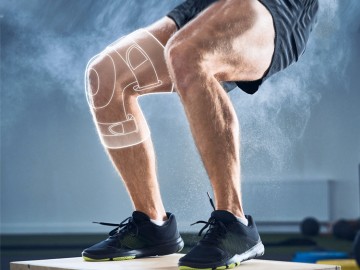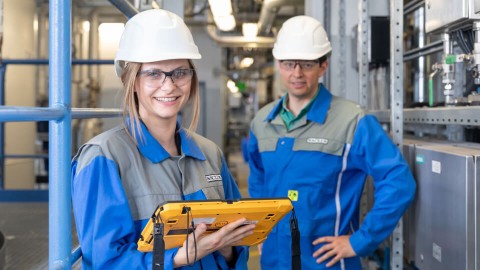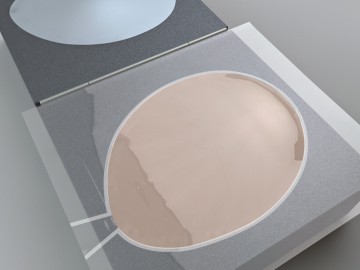Orthotics & Prosthetics

WACKER RTV-2 Systems Make All the Difference
ELASTOSIL® P and SILPURAN® room-temperature-vulcanizing (RTV) silicone elastomers and gels are specially designed to meet specific prosthetic and orthotic demands. Orthotics focus on properties such the ability to cushion shock and vibration, and to apply gentle, comfortable compression. Prosthetics is a highly sensitive area of application. The aim is to make prostheses and epitheses that fit perfectly, are comfortable to wear, and are barely noticeable.
ELASTOSIL® P and SILPURAN®’s exceptional set of properties allow customized production of:
- Orthotic pelottes/pads
- Insoles, shoe orthotics
- Heel cushions, toe spacers, toe caps
- Anti-decubitus mats
- Aesthetic and functional finger, hand and partial-foot prostheses
- Epitheses
- Orthoses
- Liners
- External mammary prostheses
Benefits of ELASTOSIL® P and SILPURAN® silicone elastomers:
- Biocompatibility
- Durability: low surface tension, thermal stability and chemical stability
- Good resistance to a large number of solvents and chemicals
- No organic plasticizers involved
- Sterilizable for single and repeated use (sterilizable with steam, ethylene oxide, electron beams and γ-rays)
- The excellent mechanical properties are highly resistant to aging, weathering, heat and radiation
- Silicones do not support microbial growth (hydrophobic)
- Easy processing due to low viscosity and good mixing characteristics
- RTV-2 silicone rubber systems do not release any by-products on curing
- Broad hardness range
- High degree of comfort for wearer; breathability
No, due to the 1:1 mixing ratio, low viscosity and long pot life at room temperature, silicone elastomers in the ELASTOSIL® P series can easily be manually dosed, mixed and molded. Production time can be reduced by curing at high temperatures, for example at 120°C. There are cost-effective mixing and metering systems for processing ELASTOSIL® P upward of specific production volumes. Please contact us for details of suitable equipment suppliers.
Thanks to its low density, lightweight ELASTOSIL® P 7630 gel can reduce the weight of the prosthesis by more than a third compared to conventional silicone gels.
Yes, ELASTOSIL® P gels adhere well to polyurethane film.
- Yes, with the kneadable silicone elastomers ELASTOSIL® P 7915 (soft), 7950 (high Shore hardness), you can adapt the prosthesis to the body.
- You can use the ELASTOSIL® FX toolbox to solve casting and life molding challenges by adapting a number of properties to your needs. Four basic silicone elastomers ranging from gelatinous to ShA 28 can be combined with ELASTOSIL® FX Softener (adjustment of texture / softness), FX Slow or Fast Cure (curing speed) and FX Thixo (flowability).
The ELASTOSIL® P 768x series is ideal for casting prosthetic liners with good durability and excellent mechanical properties. You can choose from a broad range of hardness levels from soft (sh00 25) through medium to hard (shA 12 / sh00 60). Low viscosity enables a fast and simple casting process with the end product exhibiting excellent mechanical properties.
Can I achieve good damping properties with silicone rubber compounds for pelottes, pads and insoles?
ELASTOSIL® P 7600 and the P 767x series contain silicone rubber compounds with excellent damping properties to reduce and cushion shocks and vibrations. Several grades of hardness are available and all the products are easy to process due to their low viscosity.








